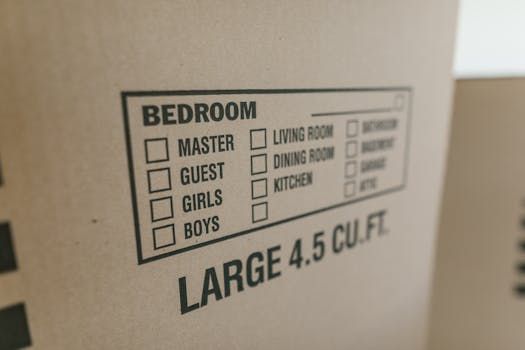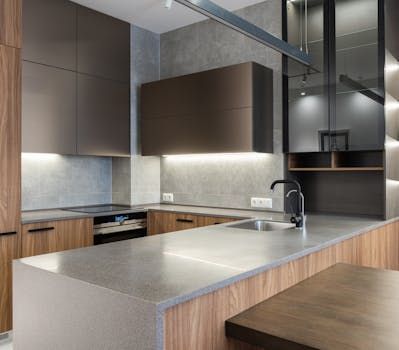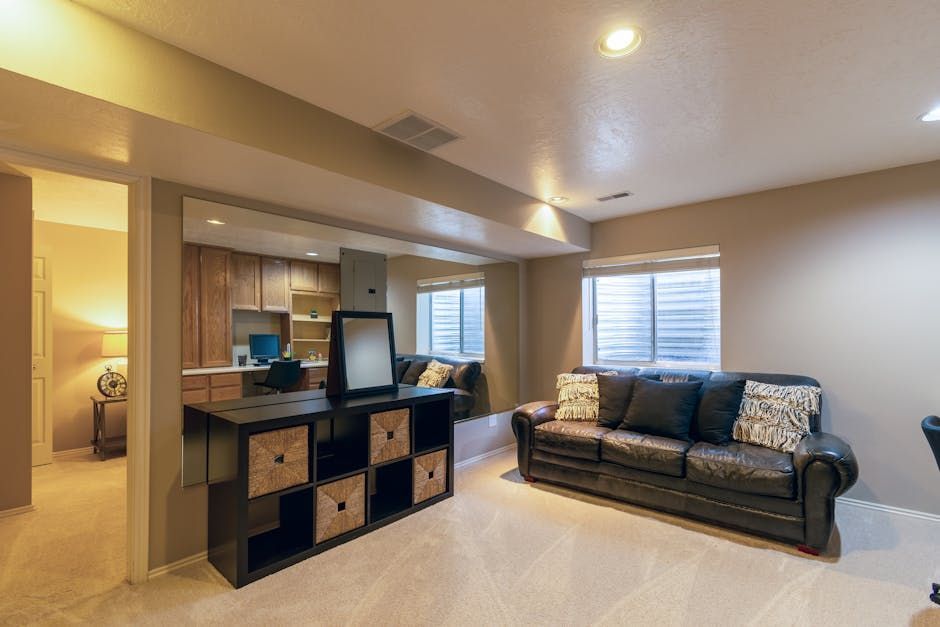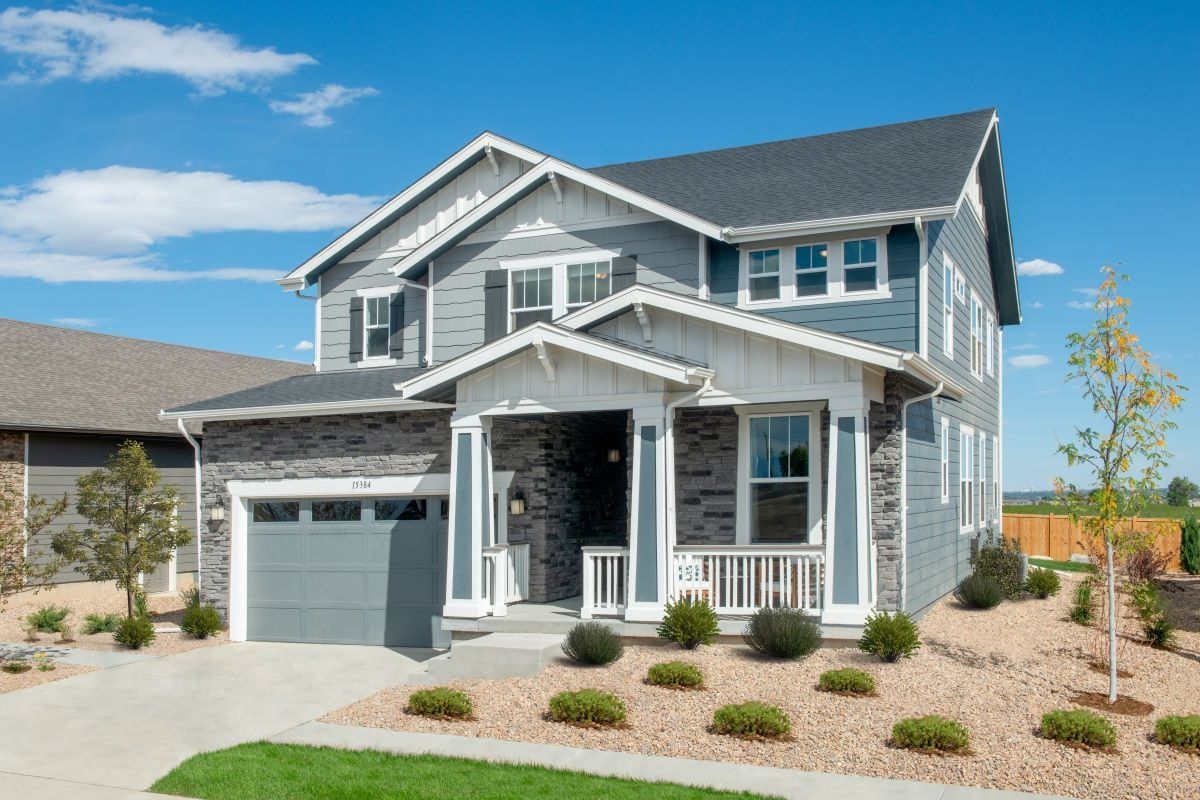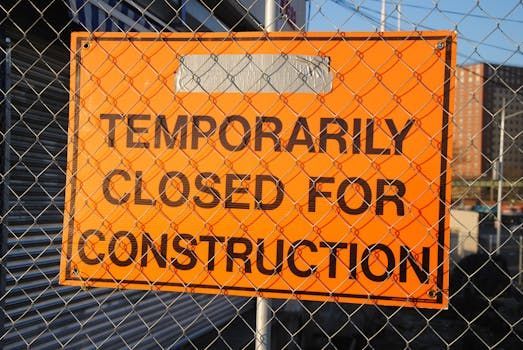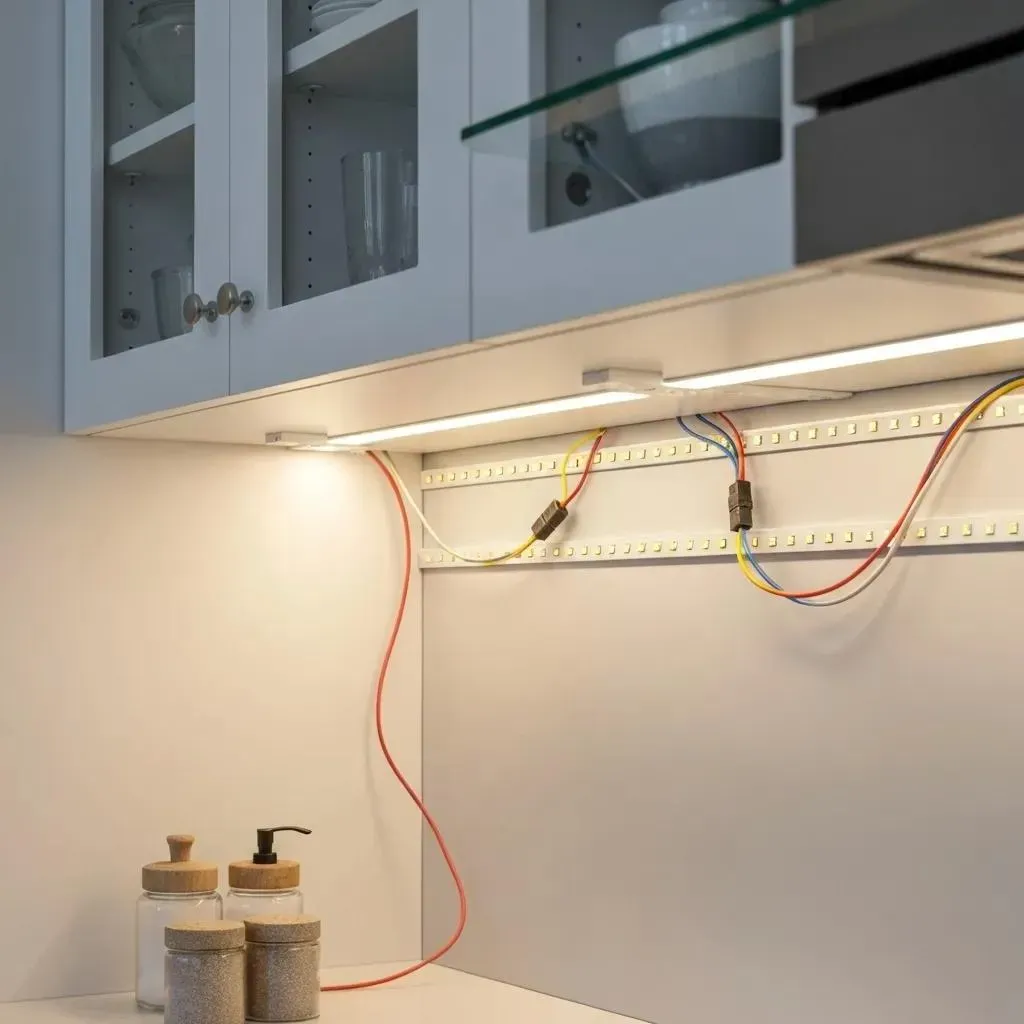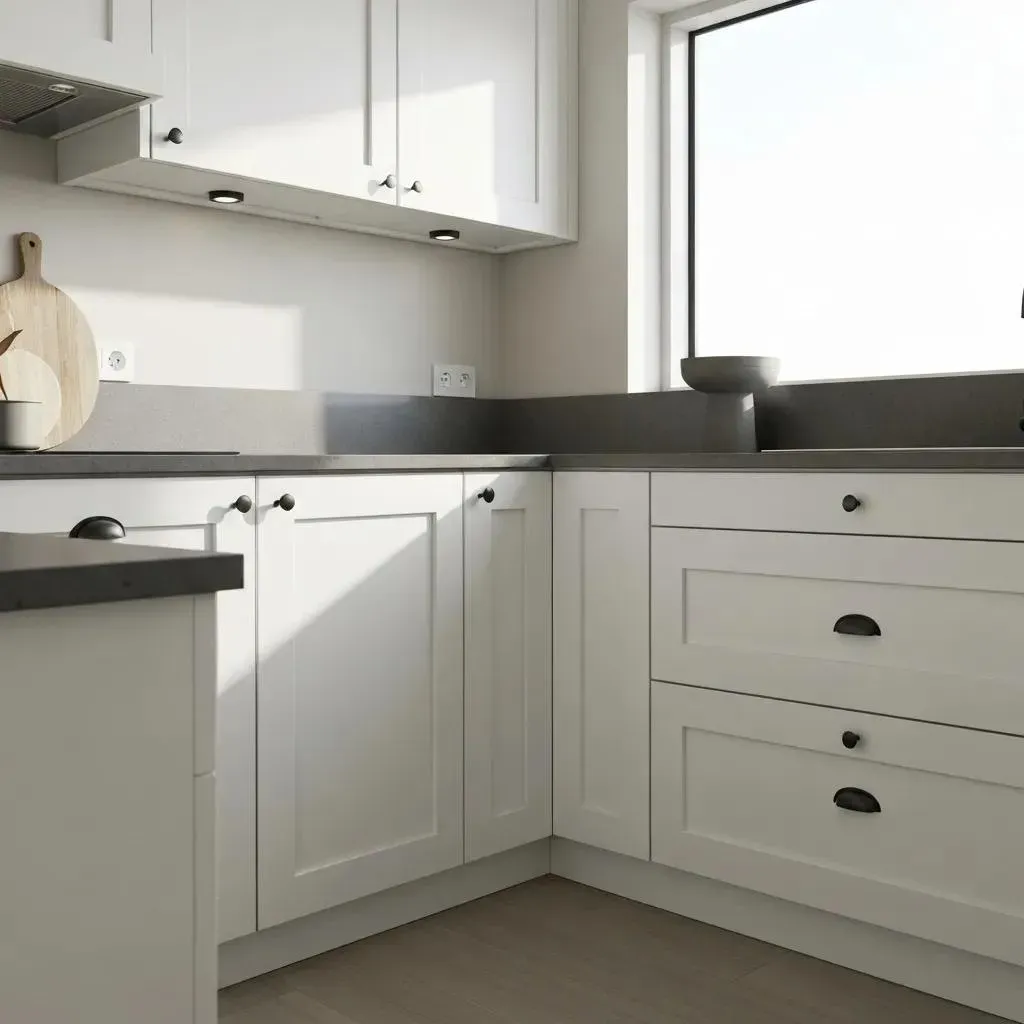Eco-Friendly Renovation: Products That Make a Difference
Building a Greener Home: The Power of Sustainable Materials
The demand for eco-friendly home renovation products has grown remarkably in recent years, with industry reports showing a 30% increase in sustainable building practices over the past five years. This shift isn't just a trend – it's a response to homeowners seeking materials that save energy, improve health, and reduce environmental impact.
When renovating your home, the products you choose make a significant difference. Sustainable materials not only benefit the planet but also create healthier living spaces and often deliver substantial long-term savings. According to the Department of Energy, eco-conscious upgrades like improved insulation and efficient HVAC systems can reduce utility bills by approximately 30%.
"If you can build a house that costs next to nothing to operate for the same price as building a traditional house, why would you build it any other way?"
I'm Mike Martinez from Accountable Home Remodeling, with over a decade of experience changing Denver homes using eco-friendly home renovation products that maximize both sustainability and comfort. My team has witnessed how these materials can dramatically improve indoor air quality while reducing a home's carbon footprint.
Why Choose Eco-Friendly Home Renovation Products
When Denver homeowners sit down with us to discuss their renovation dreams, we're hearing one question more and more: "How can we make our home healthier for our family and better for the planet?" It's not just about following trends—it's about creating spaces that reflect our values and improve our lives.
Choosing eco-friendly home renovation products delivers benefits that go far beyond just feeling good about your environmental choices. Let me share why so many of our clients are making the sustainable switch.
Energy Savings That Add Up
Your wallet will thank you for going green. The Department of Energy tells us that proper insulation and modern HVAC systems can slash your utility bills by about 30%. Those savings compound year after year.
I still smile thinking about Sarah and Mike in Westminster who called me last winter, thrilled that their monthly bills had dropped nearly $100 after we installed ENERGY STAR appliances and LED lighting in their kitchen remodel. That's $1,200 staying in their pocket each year while reducing their environmental footprint—a true win-win.
Healthier Indoor Air Quality
We spend about 90% of our time indoors, but how often do we think about what we're breathing? Traditional building materials often release VOCs and chemicals that can linger for years, affecting your family's health.
The change can be remarkable. A family in Arvada told us their son's persistent allergies improved within weeks after we replaced their old carpet with sustainable bamboo flooring and used zero-VOC paint throughout their home. The mom mentioned, "That headache-inducing 'new renovation smell' we had with our previous contractor? Completely gone this time."
Increased Property Value
Going green can mean more green when it's time to sell. Zillow research shows homes with solar panels selling for approximately 4.1% more than comparable properties without them. Today's buyers increasingly understand the long-term value of energy-efficient features and sustainable materials.
Environmental Impact
Every choice we make in a renovation ripples outward. By selecting eco-friendly home renovation products, you're helping reduce resource depletion, energy consumption, landfill waste, carbon emissions, and water usage.
For perspective, recycled steel uses about 75% less energy to produce than virgin steel. And while hardwood trees can take decades to mature, bamboo can be harvested every 3-5 years, making it one of nature's most renewable building materials.
Certifications to Look For
When navigating the sometimes confusing world of green building, these trusted certifications can be your guide:
ENERGY STAR certifies products meeting strict EPA efficiency guidelines, while LEED provides the gold standard in green building ratings. For healthy indoor air, look for GREENGUARD certification. If you're using wood products, FSC certification ensures responsible forest management, and WaterSense helps you identify products that conserve our precious water resources.
Cost Comparison: Eco-Friendly vs. Traditional
"Isn't going green more expensive?" It's probably the most common concern we hear, and I understand why. The truth is more nuanced than many realize.
While some sustainable materials have higher upfront costs, many are comparable to or even less expensive than conventional options. Plus, the equation changes dramatically when you factor in available rebates, reduced utility bills, longer product lifespans, and lower maintenance costs. Many of our clients also report fewer allergy medications and doctor visits after switching to healthier building materials—savings that don't show up on your renovation quote but matter to your family's wellbeing.
At Accountable Home Remodeling, we believe that sustainable choices shouldn't be luxuries—they should be accessible options for every homeowner who wants to create a healthier, more efficient home. We're always happy to walk you through the real costs and benefits of different materials for your specific project, with the transparency you deserve.
1. Rapidly Renewable Flooring: Bamboo & Cork
When clients ask me about sustainable flooring options, I get genuinely excited to share the wonders of rapidly renewable materials. Over the years at Accountable Home Remodeling, we've transformed countless Denver homes with these eco-friendly alternatives, and the results never fail to impress both us and our homeowners.
Bamboo: Nature's Fast-Growing Wonder
I still remember the look of surprise on a client's face when I explained that the gorgeous bamboo flooring we were discussing grows to full maturity in just 3-5 years. Compare that to traditional hardwoods that can take anywhere from 20 to 120 years to mature, and you can see why bamboo has become a superstar in the eco-friendly home renovation products world.
But bamboo isn't just about rapid renewability. Its performance often surprises our Denver homeowners too. When properly processed, many bamboo floors actually exceed the hardness of traditional oak flooring. They also handle moisture fluctuations better than many hardwoods and come in an impressive range of colors and grain patterns to match any design vision.
A Boulder client recently shared their experience: "We installed bamboo throughout our main floor three years ago, and despite our two large dogs and constant foot traffic, it still looks brand new. The best part is knowing we chose a material that will be fully replenished by the time we might need to replace it."
Cork: Comfort Meets Sustainability
Cork flooring holds a special place in my heart for its unique harvesting story. Unlike most building materials, cork is harvested from the bark of cork oak trees without harming the tree itself. The bark naturally regenerates and can be harvested again every 9-12 years throughout the tree's impressive 200+ year lifespan. This makes cork one of the most sustainable flooring options available.
What makes cork truly special, though, is how it feels underfoot. The natural cushioning provides gentle joint relief when standing, making it perfect for kitchens where you might spend hours cooking. It's naturally warm in winter thanks to its thermal properties, and it absorbs sound beautifully—making it a favorite for bedrooms and home offices.
One of our Lakewood clients who works from home full-time chose cork for their office and couldn't be happier: "It's warm, quiet, and has held up beautifully under my office chair. Plus, I love telling visitors about its sustainable origins when they ask about the unique look."
Marmoleum: The Modern Linoleum
Marmoleum deserves more attention than it gets. This modern version of linoleum is made from completely natural ingredients—linseed oil, wood flour, limestone, and jute backing—making it a standout among eco-friendly home renovation products. Unlike vinyl flooring, it contains no plasticizers or phthalates that can off-gas into your home.
"We couldn't be happier with it!" a recent customer told me after their kitchen installation. "It's lovely on your feet, quiet, and incredibly easy to clean." That feedback is common among our clients who choose Marmoleum for high-traffic areas like kitchens and bathrooms.
What impresses me most about Marmoleum is its longevity—with proper care, these floors can last 40+ years. They're naturally antibacterial, require simple cleaning without harsh chemicals, and emit zero VOCs. For families concerned about indoor air quality, it's a game-changer.
When installing any of these sustainable flooring options, we always recommend using low-VOC or zero-VOC adhesives to maintain the environmental integrity of your project. Many manufacturers now offer pre-finished products with plant-based finishes that further reduce environmental impact while providing beautiful, durable protection.
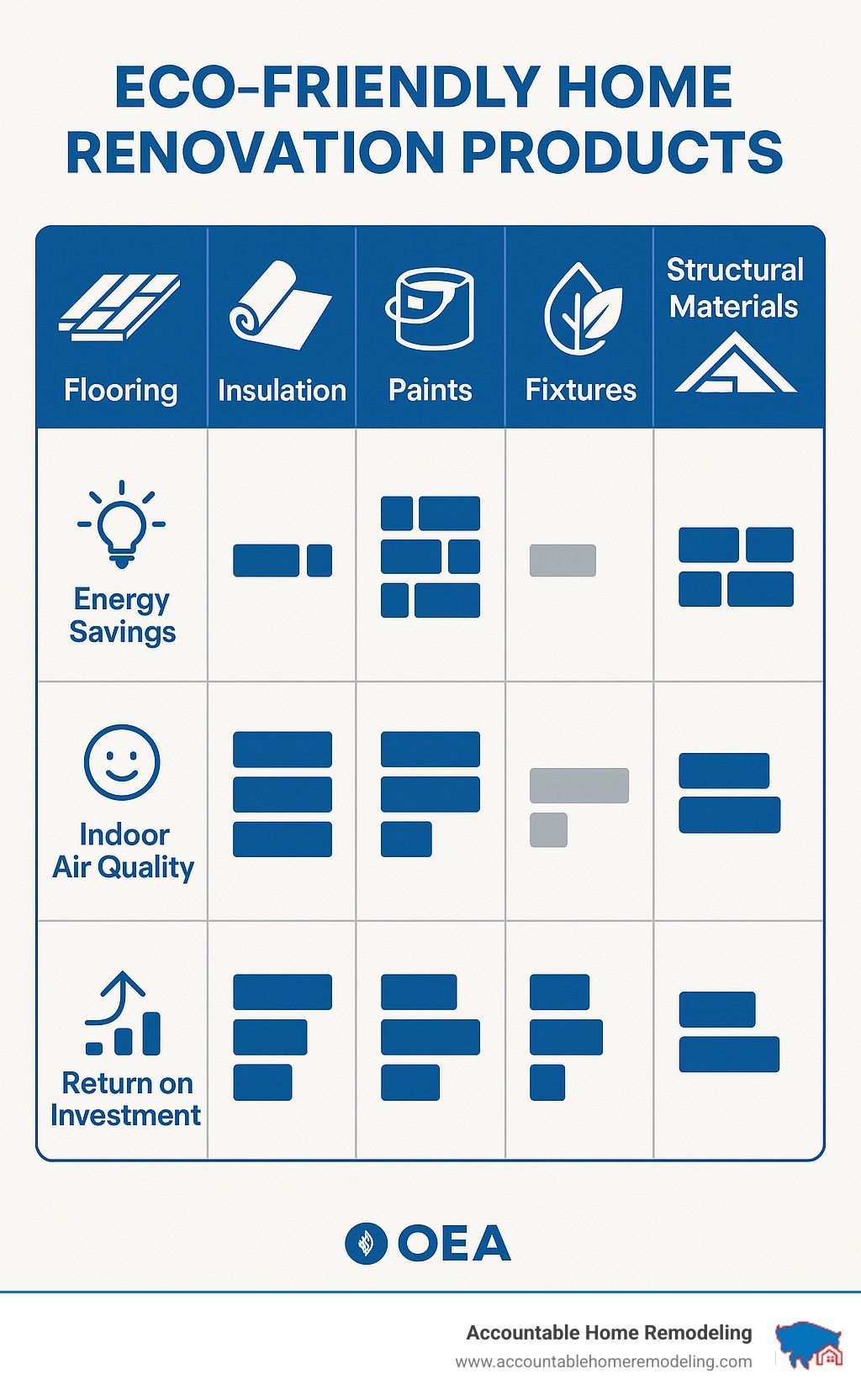
Want to learn more about these and other sustainable materials? Check out our guide to Green Building Materials for a deeper dive into the options available for your Denver home.
2. Recycled Steel & Reclaimed Wood Structural Elements
When renovating homes across the Denver Metro Area, we've seen how structural elements can blend sustainability with stunning performance. Two materials have consistently stood out in our eco-friendly renovations: recycled steel and reclaimed wood.
Recycled Steel: Strength with Environmental Savings
The environmental impact of recycled steel truly amazes our clients. Manufacturing steel from recycled materials uses approximately 75% less energy than creating new steel from raw materials. This isn't just a small improvement—it's a game-changer for reducing your renovation's carbon footprint. With North America recycling up to 80 million tons of steel annually, it's become one of our most sustainable building resources.
In our Denver projects, we've incorporated recycled steel in countless creative ways. We've used it to create support beams when opening up cramped floor plans, add structural reinforcement during home additions, design eye-catching decorative elements like exposed beams, and provide robust framing for basement conversions.
A homeowner in Thornton recently shared their experience after we completed their open-concept renovation: "The recycled steel beam you installed not only gave us the breathtaking open space we dreamed of, but knowing it's sustainable material makes it even more meaningful. It's become quite the conversation starter when we entertain!"
Beyond being environmentally responsible, recycled steel offers remarkable practical benefits. Its superior strength-to-weight ratio allows for longer spans and more open designs than traditional materials. It stands up to pests, rot, and fire, significantly enhancing home safety. Unlike wood, it maintains perfect dimensional stability regardless of humidity changes. And because it's precisely manufactured, there's minimal waste during installation.
Reclaimed Wood: Character with a History
There's something truly special about bringing wood with a previous life into your home. The reclaimed lumber we source from old barns, factories, warehouses, and other structures carries unique character and stories while keeping valuable materials out of landfills—truly embodying the circular economy principle.
Our Denver area clients have fallen in love with reclaimed wood in various applications: as dramatic exposed ceiling beams, conversation-starting statement walls, custom built-ins with history, distinctive flooring that can't be replicated, and kitchen islands that become the heart of the home.
"Everyone who visits asks about our reclaimed wood kitchen island," an Aurora homeowner told us recently. "Each mark and nail hole tells a story, and we love explaining that we chose it not just for its beauty but because it's a sustainable choice that preserved a piece of history."
The benefits of reclaimed wood go far beyond its undeniable charm. These materials offer exceptional stability since old-growth lumber has had decades (sometimes centuries) to fully cure. The unique patina, weathering, nail holes, and saw marks create truly one-of-a-kind elements in your home. Many reclaimed woods come from old-growth forests, resulting in denser, harder wood than today's commercially grown lumber. And perhaps most importantly, each reclaimed board represents trees that don't need to be cut down.
When incorporating these sustainable structural elements, we always recommend verifying authenticity. Make sure your steel truly contains recycled content (typically certified) and that wood is genuinely reclaimed rather than artificially distressed new material. We prioritize local sourcing whenever possible, working with excellent Denver area salvage yards and metal recyclers to further reduce transportation emissions.
One Arvada homeowner perfectly captured the appeal: "Our renovation using reclaimed barn wood and recycled steel feels both modern and timeless. It's incredibly sturdy, undeniably beautiful, and aligns perfectly with our values of reducing waste. The fact that these materials have been given a second life in our home makes the space feel that much more special."
By incorporating eco-friendly home renovation products like recycled steel and reclaimed wood, your home renovation can honor the past while creating a more sustainable future. The scientific research on recycled steel benefits continues to demonstrate why these materials represent some of the smartest choices for environmentally conscious homeowners.
3. Low- and Zero-VOC Paints & Finishes
Choosing the right paints and finishes might seem like a small detail in your renovation journey, but it's actually one of the most impactful choices you'll make for your family's health and comfort. When our clients walk into their newly painted spaces and take that first deep breath without chemical odors, their reactions tell the whole story.
Understanding VOCs and Their Impact
Traditional paints have long been silent troublemakers in our homes. Those volatile organic compounds (VOCs) don't just create that "fresh paint smell" – they continue releasing harmful gases into your air for years after application. These chemicals help paint flow smoothly and resist mildew, but they've been linked to everything from minor headaches to serious respiratory issues.
I'll never forget what Tom Rioux, the founder of Earthpaint, shared with me at a green building conference. After surviving a near-fatal illness he traced back to toxic coatings, he described traditional petrochemical paints as "poisons that harm people and the planet long after application." His personal experience echoes what many of our clients with sensitivities have told us over the years.
Zero-VOC Paint Options
Today's eco-friendly paints have come a long way, offering beautiful results without compromising your health. Here are some standouts we've used in hundreds of Denver homes:
ECOS Paints has become our go-to for clients with sensitivities. Their water-based formulas contain zero VOCs (not just "low" VOC), no toxic biocides, and complete ingredient transparency. They've earned ASTM-D4236 certification for safety regarding toxicity and respiratory effects. Plus, their coverage is exceptional – up to 560 sq. ft. per gallon, which is about 1.5 times more than conventional paints.
One of our Westminster clients with chemical sensitivities summed it up perfectly: "After your team painted our bedrooms with ECOS, it was the first time I didn't have to leave the house during a painting project. There was literally no odor, and I experienced zero reactions."
Earthpaint takes a fascinating approach to preservation, using skin-cream technology instead of traditional biocides. Their 100% natural urethane finishes for floors and woodwork perform beautifully, and their innovative deck stains are manufactured from waste streams like cashew shells and paper mill by-products.
A Northglenn family we worked with reported back five years after their basement renovation: "The lime-based primer you recommended has been remarkable. We haven't seen any return of the mold issues that plagued us before."
Air-Purifying Paint Technology
Some advanced eco-friendly home renovation products in the paint category do more than avoid harm – they actively improve your home environment:
Modern air-purifying formulations can actually absorb and neutralize common indoor pollutants and VOCs from other sources. Natural minerals like lime create surfaces that are naturally inhospitable to mold and bacteria. And clay and lime-based paints help regulate indoor humidity levels, creating more comfortable spaces.
Application Considerations
For the best results with eco-friendly paints, we always recommend thorough surface preparation to ensure good adhesion. High-quality brushes and rollers make a noticeable difference in the finish. Even with zero-VOC products, good ventilation during application helps everything dry properly. And most eco-paints perform best when applied between 60-85°F.
Color and Finish Options
"But do they come in the colors I want?" This is probably the most common question we hear about eco-friendly paints. Thankfully, those days of limited options are long gone.
Today's products offer thousands of colors with custom matching available from most manufacturers. You'll find everything from flat to high-gloss finishes with the same eco-friendly formulations. There are specialized kitchen and bath formulas with improved moisture resistance, and exterior options that stand up to Colorado's challenging weather while maintaining their earth-friendly credentials.
I still remember the reaction of a Broomfield family who chose zero-VOC paint for their nursery renovation. The mom told me with tears in her eyes: "Knowing our baby's room was painted with safe, non-toxic paint gave us incredible peace of mind. The colors are vibrant, the finish is beautiful, and most importantly, we're not exposing our child to harmful chemicals during their most vulnerable years."
At Accountable Home Remodeling, we believe these moments of relief and confidence are what sustainable renovations are all about – creating spaces that are not just beautiful, but truly healthier for the people who live in them.
4. High-Performance Insulation: Wool, Cellulose, Aerogel
Insulation might not be the showstopper in your renovation photos, but it's quietly working behind the scenes as one of your home's environmental heroes. When we talk with Denver homeowners about eco-friendly home renovation products, insulation often gets overlooked—yet it's where you'll likely see the biggest impact on both your comfort and energy bills.
Natural Wool Insulation: Nature's Perfect Insulator
There's something wonderfully poetic about sheep wool protecting your home the same way it protects the animals it comes from. Wool insulation isn't just sustainable and renewable—it's practically a smart material with benefits synthetic options simply can't touch.
Wool naturally manages moisture in a way that seems almost magical. It can absorb up to 30% of its weight in moisture without losing any insulating properties, which means it helps regulate humidity in your home. One of our Arvada clients with previous mold issues told us, "Since you installed the wool insulation, our home feels different—the air is fresher, and those musty smells in certain rooms have completely disappeared."
What really sets wool apart is its ability to actually purify your indoor air. It naturally absorbs and neutralizes common pollutants like formaldehyde and nitrogen dioxide. For families with allergies or asthma, this can be life-changing. A client's daughter who struggled with respiratory issues experienced noticeably fewer symptoms within weeks of their wool insulation installation.
The temperature regulation is remarkable too—wool keeps you warm in winter and cool in summer, creating more consistent temperatures throughout your home. And if safety concerns you, wool's natural flame resistance (without chemical treatments) provides extra peace of mind.
Recycled Cellulose: From Old to New
There's something deeply satisfying about knowing your walls are insulated with yesterday's news—literally. Cellulose insulation transforms recycled paper products, primarily newspapers, into one of the most environmentally friendly insulation options available, with up to 85% recycled content.
"I love telling friends that our attic is essentially insulated with the Denver Post," laughed one Longmont homeowner after we completed their renovation. "But what I love even more is how our upstairs rooms no longer feel like a sauna in summer, and our heating bills dropped by about 25% that first winter."
Cellulose has an almost magical ability to find and fill every nook and cranny in your walls or attic. This superior filling ability creates an effective air barrier, reducing drafts and energy loss. The borate compounds used to treat it are non-toxic to humans but naturally repel pests, giving you protection without harsh chemicals.
For those sensitive to noise, cellulose offers an added bonus—its density provides excellent sound dampening, creating a quieter, more peaceful home environment. One work-from-home client told us her Zoom calls improved dramatically after we insulated the walls of her home office with cellulose.
Advanced Aerogel Insulation: Space-Age Performance
When space is tight but your insulation needs are big, aerogel offers a solution that seems straight out of science fiction. Originally developed for NASA, this remarkable material—sometimes called "frozen smoke"—is one of the lightest solid materials known while providing exceptional insulating properties.
With up to R-10 per inch (compared to fiberglass at R-3.5), aerogel allows for thinner wall assemblies while delivering superior performance. This made it perfect for a historic home renovation in Boulder, where maintaining the original architectural details was essential.
"We couldn't change the wall thickness in our 1920s craftsman without destroying its character," the homeowner explained. "The aerogel solution your team recommended let us achieve modern energy standards while preserving the home's historic features. Our heating costs dropped nearly 40%, which honestly we didn't think was possible in such an old home."
Aerogel's extreme temperature resistance (performing from -460°F to 1200°F) makes it incredibly versatile. Its hydrophobic properties prevent moisture issues, and unlike some insulation materials, it doesn't settle or degrade over time—a true install-it-and-forget-it solution.
Plant-Based Foam Alternatives
The insulation world is innovating beyond petroleum-based products with exciting plant-based alternatives derived from renewable resources like soy, hemp, and even mushrooms. These bio-based options reduce reliance on petrochemicals while delivering comparable performance.
Many of our environmentally conscious clients appreciate that these alternatives have zero ozone-depleting potential and significantly lower global warming impact. The improved indoor air quality from reduced off-gassing is another major benefit, especially for families with chemical sensitivities.
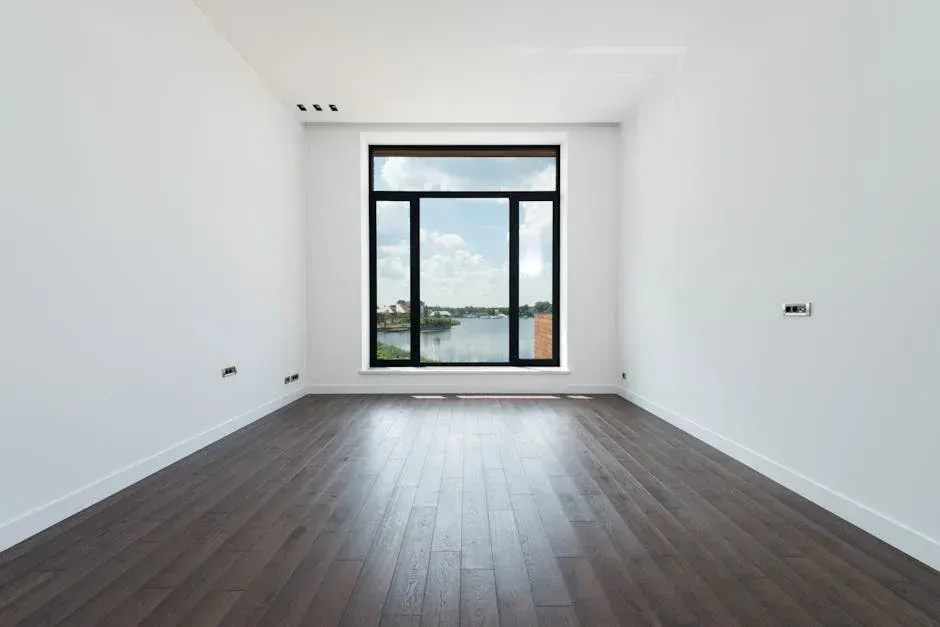
Insulation Impact on Energy Consumption
The numbers don't lie—properly insulating your home during renovation can slash energy consumption by 20-30%. For a typical Denver home, that could mean hundreds of dollars saved annually while significantly reducing your carbon footprint.
Beyond the financial benefits, our clients consistently report more comfortable living spaces after upgrading their insulation. The temperature differences between rooms disappear, drafty corners become cozy, and heating and cooling systems don't need to work as hard.
When helping our Denver Metro clients select the right eco-friendly home renovation products for insulation, we consider several factors specific to our unique climate. Our region's dramatic temperature swings—from below-freezing winters to hot summers—require insulation that performs well in both extremes. We also evaluate the existing structure, space constraints, potential allergen concerns, and budget considerations, including available energy efficiency rebates.
With the right insulation choice, your home becomes not just more environmentally friendly, but more comfortable, quiet, and economical—benefits you'll enjoy every day for years to come.
5. ENERGY STAR Appliances & LED Lighting
When it comes to sustainable home renovations, few upgrades deliver more immediate benefits than energy-efficient appliances and lighting. These improvements aren't just good for the planet—they're also fantastic for your utility bills and home comfort.
ENERGY STAR Appliances: The Gold Standard for Efficiency
That little blue ENERGY STAR label has become something of a superhero symbol in home efficiency. When you see it, you know that appliance has met the Environmental Protection Agency's strict guidelines for energy conservation.
The savings can be pretty remarkable. Modern ENERGY STAR refrigerators use about 9% less energy than standard models, which might not sound like much until you realize that translates to over $220 in savings over its 12-year lifespan. And that's just the beginning.
"Our electricity bill dropped by about $35 per month after the remodel," shared a family in Aurora after we installed their new kitchen appliances. "The new refrigerator runs quieter than our old one, and the dishwasher cleans better while using less water. It's a win all around."
The benefits extend throughout your home:
Dishwashers certified by ENERGY STAR save about 3,870 gallons of water over their lifetime—particularly important here in Colorado where water conservation matters.
Washing machines with the certification typically use about 25% less energy and 33% less water than conventional models, which means less impact on both your utility bills and local water resources.
Dryers with advanced moisture sensors know exactly when your clothes are dry, preventing energy waste and fabric damage from over-drying. These can save up to $215 in energy costs over their lifetime.
When helping Denver homeowners select eco-friendly home renovation products for their kitchens and laundry rooms, we always recommend right-sizing your appliances. That oversized refrigerator might look impressive, but if it's bigger than you need, you're cooling empty space and wasting energy. Smart features that adjust energy use based on actual needs are also worth considering—like refrigerators that can shift to low-power mode when you're on vacation.
LED Lighting: The Bright Choice for Sustainability
The lighting revolution of the past decade has transformed LEDs from expensive novelties to affordable must-haves. The benefits are simply too good to ignore:
LEDs use up to 90% less energy than old-school incandescent bulbs while lasting 50,000-100,000 hours—that's up to 25 times longer! This means fewer replacements and less waste heading to landfills.
A Westminster client told us: "When we replaced all the recessed lights in our home with LEDs, the difference was immediate. The quality of light is better, they don't heat up the rooms in summer, and we haven't had to replace a single bulb in three years."
Unlike incandescent bulbs that convert most energy to heat (making your air conditioner work harder), LEDs convert most energy to light. This efficiency creates a double benefit—lower lighting costs and reduced cooling costs during summer months.
Modern LEDs also offer incredible design flexibility. Whether you want warm, cozy lighting for your living room or bright, energizing light for your home office, there's an LED option that fits. Many offer smooth dimming capabilities without the flickering associated with older technology.
Smart Controls: Maximizing Efficiency
Pairing efficient appliances and lighting with smart controls is like adding a turbocharger to an already efficient engine. These technologies work together to eliminate energy waste:
Programmable thermostats can save up to 10% annually on heating and cooling by adjusting temperatures when you're sleeping or away from home. The newest models even learn your habits and preferences automatically.
Smart lighting controls with motion sensors ensure lights only operate when needed, while app-based systems let you turn off forgotten lights from anywhere.
A Thornton homeowner who incorporated these features during their renovation told us: "The ability to control our lighting and appliances from our phones has been game-changing. We can turn off forgotten lights remotely, schedule the dishwasher to run during off-peak hours, and our smart thermostat adjusts automatically when we're away."
Home energy monitoring systems provide real-time feedback on your consumption, helping you identify energy hogs and adjust habits accordingly—many homeowners report saving 10-15% simply by being more aware of their usage patterns.
Available Rebates and Incentives
One of the best parts about choosing eco-friendly home renovation products like ENERGY STAR appliances and LED lighting is that you're often not shouldering the full cost. The Denver Metro Area offers numerous incentives that can significantly reduce your upfront investment:
Xcel Energy provides substantial rebates for ENERGY STAR appliances and LED lighting installations. Federal tax incentives can further reduce costs for energy-efficient home improvements. Many manufacturers offer additional savings on high-efficiency models, and some local programs even provide low-interest loans specifically for energy efficiency upgrades.
"The rebates we qualified for covered almost 30% of the cost difference between standard and high-efficiency appliances," one Boulder client was happy to report. "The payback period was much shorter than we expected."
When planning your renovation, our team at Accountable Home Remodeling can help steer these incentives to maximize your savings. We've helped countless Denver area homeowners transform their spaces with Energy Efficient Lighting Solutions that look beautiful while consuming less energy and lasting for years.
6. WaterSense Fixtures & Smart Plumbing Upgrades
Living in Colorado's semi-arid climate, we've seen how water conservation isn't just environmentally responsible—it's practically essential. Our Denver Metro clients are increasingly requesting water-saving solutions that work as beautifully as they perform. The good news? Today's eco-friendly home renovation products for plumbing deliver impressive water savings without sacrificing one bit of comfort or convenience.
WaterSense Certified Fixtures: The EPA's Mark of Efficiency
Think of WaterSense as the water-saving cousin of ENERGY STAR. When you see this EPA certification, you can trust that the fixture uses at least 20% less water while performing just as well as (or better than) conventional models.
"I was honestly surprised," shared Mark from Lakewood after we completed his bathroom renovation. "The WaterSense showerhead actually improved our water pressure. My wife says her hair rinses cleaner now, and our water bill dropped by $22 the very first month."
Low-Flow Showerheads: Same Pressure, Less Water
Traditional showerheads guzzle 2.5 gallons per minute or more, while WaterSense models deliver satisfying showers using no more than 2.0 gpm. Some of our favorite ultra-efficient models use just 1.5 gpm while maintaining excellent pressure through innovative spray technologies.
The math is eye-opening: By switching to efficient showerheads, the average family saves up to 2,700 gallons annually. That's not just water saved—it's less energy used for heating and reduced strain on local water treatment facilities.
Water-Efficient Toilets: The Biggest Water Saver
If you're still flushing with an older toilet, you might be using 3.5 to 7 gallons per flush—water literally going down the drain! Modern WaterSense toilets use a maximum of 1.28 gpf, often with dual-flush options that use even less for liquid waste.
Sarah in Westminster told us: "The dual-flush toilets you installed have been fantastic. They're more powerful than our old water-hogs, and we've never had a clog. My kids actually think the two-button system is fun to use!"
Today's efficient toilets aren't just water-savers—they're better engineered with powerful flushing technology, improved leak resistance, and comfort features like chair-height seating and elongated bowls. Plus, they come in styles to complement any bathroom design, from sleek and modern to traditionally neat.
Efficient Faucets and Aerators: Small Changes, Big Impact
Bathroom faucets with the WaterSense label flow at a maximum of 1.5 gpm compared to the standard 2.2 gpm—that's 30% less water without any noticeable difference in function.
In kitchens, we often recommend pull-down sprayers with multiple flow patterns that let you adjust water use to the task at hand. Touch or hands-free activation prevents water waste when your hands are messy (no more leaving the water running while you grab something from the refrigerator!).
"The touch-activated kitchen faucet has been a game-changer," James from Aurora shared after his kitchen remodel. "It's so convenient when my hands are covered in cookie dough, and I've noticed we use much less water because it's easy to tap off between tasks."
Smart Water Management Systems
Beyond efficient fixtures, smart water technology adds another layer of protection and savings to your home:
Leak Detection Systems
Water damage from undetected leaks costs homeowners billions every year. Smart leak detection systems monitor water flow throughout your home, alert you to unusual usage patterns, and can even automatically shut off your water if they detect a major leak.
"The leak sensor you installed saved us thousands," reported a family in Arvada. "It detected a small leak under our washing machine before it caused any damage. The peace of mind alone is worth the investment."
Rainwater Harvesting
In our Colorado climate, capturing rainwater for landscape irrigation makes perfect environmental and economic sense. Simple rain barrels can be installed for under $100, while more sophisticated systems can capture thousands of gallons for larger properties.
One Broomfield homeowner told us: "The rainwater harvesting system we installed during our backyard renovation collects enough water from our roof to handle most of our garden watering needs throughout the summer. My vegetables actually seem to prefer rainwater to treated city water!"
Greywater-Ready Plumbing
Forward-thinking renovations can include plumbing configured for future greywater systems—separating drain lines for sinks, showers, and washing machines, with access points for future greywater diversion equipment.
"When renovating our master bath, you suggested making our plumbing 'greywater-ready' even though we weren't installing a full system yet," recalled a client in Golden. "Now that Colorado has expanded greywater reuse permissions, we're adding the final components without having to tear into walls again. That's what I call thinking ahead!"
Water Conservation Impact
The combined effect of water-efficient fixtures creates impressive results. Most of our clients see 20-30% lower water and sewer costs immediately after installation. Your water heater works less too, extending its life and reducing energy use.
Perhaps most importantly, water-efficient homes are future-proofed against rising water costs and potential restrictions—something increasingly important in our growing Front Range communities.
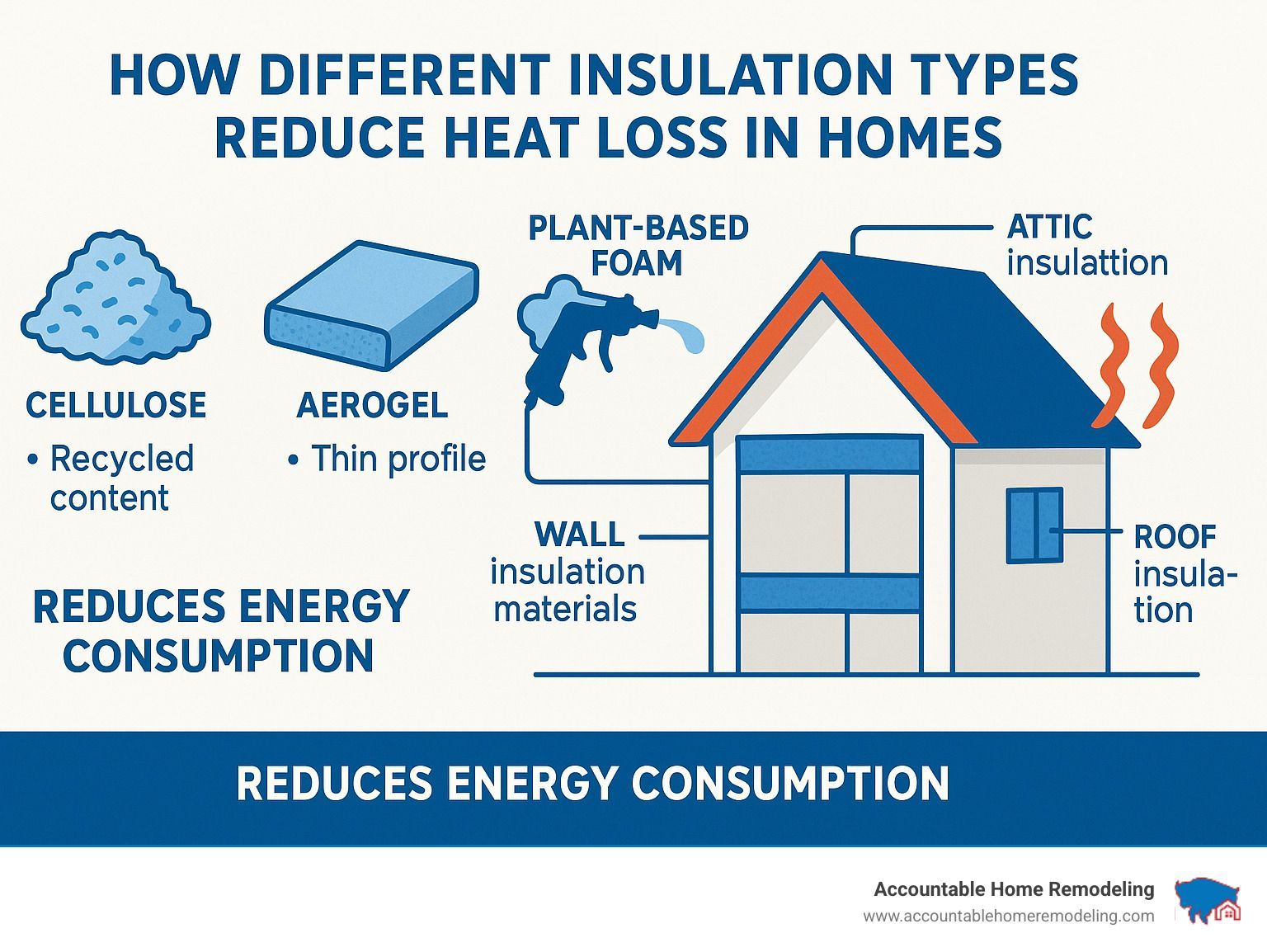
When we install these eco-friendly home renovation products in your bathroom or kitchen, we're not just saving water—we're creating spaces that work better, look beautiful, and align with your values. And that's a renovation that truly flows with purpose.
7. Next-Gen Composite Panels & Cool Roofing
The world of sustainable building materials is evolving rapidly, and two innovations are making waves in eco-friendly home renovations: advanced composite panels and cool roofing technologies. At Accountable Home Remodeling, we've seen how these materials can transform Denver homes while reducing environmental impact.
Revolutionary Composite Panels
Remember the days when water damage meant replacing entire walls? Or when mold in the bathroom seemed inevitable? Next-generation composite panels are changing all that, offering durability that traditional materials simply can't match.
NEXBOARD™: A Circular Economy Solution
One product that truly impresses us is NEXBOARD™. This innovative material represents everything we love about sustainable building – it gives waste materials new life while outperforming conventional options.
"I was skeptical at first," admits Mark, a homeowner in Northglenn whose basement we renovated. "But after a minor water leak that would have ruined drywall, my NEXBOARD walls still look perfect three years later. No mold, no warping – nothing."
What makes NEXBOARD™ special is its unique composition of recycled plastics and cellulose fibers combined with non-toxic fire retardants. Unlike traditional panels, it resists water damage, mold growth, and physical impacts, making it perfect for Colorado's variable climate.
The fire-resistant properties are particularly valuable in our wildfire-prone region. When exposed to heat, the material forms a protective char layer that prevents flames from spreading while releasing only harmless gases – a crucial safety feature for Denver families.
Sustainable Panel Applications
In our renovation projects, we've found these next-gen composites shine in challenging environments:
Bathrooms are a natural fit due to their moisture resistance. "The composite panels in our master bath renovation have been outstanding," shares a Boulder client. "Unlike our previous renovation where the drywall developed mold behind the shower, these panels still look brand new despite daily steam and splashes."
Basement renovations benefit tremendously from these materials. With their resistance to moisture and mold, homeowners gain peace of mind even in below-grade spaces that traditionally present humidity challenges.
Kitchen backsplashes and areas around sinks hold up beautifully thanks to their durability and easy cleaning properties. And as exterior siding backing, they provide improved structural support and weather resistance compared to traditional sheathing.
Cool Roofing Technology
Your roof is essentially your home's helmet – protecting you from the elements while taking the brunt of nature's fury. Cool roofing technology transforms this critical component into an energy-saving powerhouse.
"I never realized how much our old dark roof was heating our home until we replaced it," shares Jennifer from Denver. "The upstairs bedrooms that were unbearable on summer afternoons now stay comfortable even during heat waves. Our air conditioner runs less, and our summer electric bills dropped by about 20%."
Cool roofs work by reflecting more sunlight and absorbing less heat than standard roofing materials. This simple principle delivers impressive benefits: reduced cooling costs (typically 15-30% in summer), extended roof life due to less thermal stress, and a smaller contribution to the urban heat island effect that makes cities hotter than surrounding areas.
Cool Roof Options for Denver Homes
Colorado's unique climate – with intense UV exposure at our higher altitude and dramatic temperature swings – actually makes cool roofing especially effective here. Several options work beautifully for Denver homes:
Solar-reflective asphalt shingles look nearly identical to traditional shingles but contain special granules that reflect solar energy. They're available in various colors (not just white!) and typically cost only slightly more than standard shingles, making them an accessible upgrade.
Metal roofing with cool coatings offers exceptional durability with lifespans exceeding 50 years. The reflective finishes maximize solar reflection, and the material is fully recyclable at the end of its life – a truly cradle-to-cradle solution. Plus, metal roofs provide an excellent foundation for solar panels when you're ready to take that step.
Clay and concrete tiles with solar-reflective coatings combine old-world aesthetics with modern performance. Their natural thermal resistance and extreme longevity (50-100+ years) make them an investment that pays dividends for generations.
Cool flat roof membranes like TPO (Thermoplastic Polyolefin) can reduce surface temperatures by up to 50°F – a remarkable difference you can actually feel inside your home. These are ideal for modern or mid-century homes with low-slope roofs.
Performance in Denver's Climate
Living in Colorado means dealing with unique weather patterns that can challenge building materials. Fortunately, both composite panels and cool roofing technologies are well-suited to our local conditions.
The wide temperature fluctuations we experience – sometimes 40-degree swings in a single day – cause many materials to expand and contract dramatically. Next-gen composites maintain their dimensional stability through these changes, preventing the cracking and warping that plague traditional materials.
Our intense UV exposure at higher elevations makes cool roofing particularly effective here. While homeowners nationwide benefit from reflective roofing, Denver residents often see even more dramatic results due to our stronger sunlight.
Hail resistance is another crucial factor in our region, where severe storms can cause millions in damage annually. Many advanced composites and cool roofing materials offer superior impact resistance compared to traditional options.
"After the big hailstorm last year, we walked our Westminster neighborhood and noticed something interesting," says Mike from our team. "Homes with newer cool roofing technology had significantly less damage than those with conventional roofing. That durability adds real value beyond the energy savings."
Installation Considerations
When incorporating these advanced materials into your renovation, proper installation is absolutely crucial. Both composite panels and cool roofing require specific techniques to perform as designed. That's why we ensure our installation teams receive specialized training on these newer materials.
It's also important to verify compatibility with your existing structure and other building components. And while these materials often cost more upfront than traditional options, most homeowners find the long-term benefits in durability, energy savings, and reduced maintenance make them worthwhile investments.
Perhaps most importantly, choosing these advanced materials helps future-proof your home. They often make it easier to add solar panels or other green technologies later, creating a foundation for continued improvements as your budget allows.
When you're ready to explore how next-gen composites and cool roofing can benefit your Denver home renovation, we'd love to walk you through the options that make the most sense for your specific situation.
How to Select Authentic Eco-Friendly Home Renovation Products
With the growing popularity of sustainable building, "greenwashing"—making misleading environmental claims—has unfortunately become common. At Accountable Home Remodeling, we help Denver homeowners steer these challenges to select truly eco-friendly home renovation products that deliver on their promises.
Understanding Eco-Labels and Certifications
Legitimate third-party certifications are your best defense against greenwashing. I often tell my clients to think of these certifications as your "truth detectors" in a sea of marketing claims.
"Understanding these certifications helped us make informed choices during our Longmont home renovation," shared a recent client. "Instead of just accepting vague 'eco-friendly' claims, we looked for specific certifications relevant to each product category."
The most trustworthy environmental certifications include ENERGY STAR for energy efficiency, WaterSense for water-saving products, GREENGUARD for materials with low chemical emissions, FSC certification ensuring responsible forestry practices, and Cradle to Cradle which evaluates products across multiple sustainability factors.
For specific materials, look for GreenSeal on paints and adhesives, FloorScore for flooring that won't compromise your indoor air, CARB Compliance on wood products to ensure safe formaldehyde levels, and GOTS certification for natural fibers like wool insulation.
Adopting Lifecycle Thinking
When I sit down with homeowners to plan their eco-friendly renovations, I always encourage thinking beyond the "now" of a product. True sustainability considers a product's entire journey.
"Thinking about the full lifecycle of materials changed our perspective," commented a Boulder homeowner who worked with us on a whole-home eco-renovation. "For example, we chose locally quarried stone over imported tile despite the slightly higher cost because the reduced transportation impact aligned better with our values."
Start by considering how materials are sourced—are they renewable, recycled, or responsibly harvested? Then look at the manufacturing process and the energy, water, and chemicals used. Transportation impact matters too, which is why locally produced materials often have a lower carbon footprint. Don't forget to evaluate how the product will perform over time and what maintenance it requires. Finally, think about end-of-life options—can the product be recycled, composted, or repurposed when you're done with it?
Identifying and Avoiding Greenwashing
"Working with your team helped us see through marketing claims," said an Arvada homeowner. "For instance, one flooring option claimed to be 'eco-friendly' but contained high levels of formaldehyde. Your guidance led us to a truly low-emission alternative with proper certification."
Be wary of vague claims like "eco-friendly," "green," or "natural" without specific explanations backing them up. Watch out for irrelevant claims that highlight one minor green attribute while ignoring major environmental impacts. Claims without certification, data, or transparent information should raise red flags. And be cautious of hidden trade-offs—products that solve one environmental problem but create others.
Leveraging Local Supply Chains
There's something special about incorporating materials from your own community into your home. Beyond the environmental benefits, it creates a connection to place that imported materials simply can't match.
"We were able to source reclaimed wood from a Denver salvage yard for our Thornton renovation," our project manager notes. "Not only did this reduce environmental impact, but it also connected the project to local history—the wood came from a decommissioned warehouse that had been a landmark for decades."
Sourcing materials locally reduces transportation emissions, supports our Denver Metro economy, and often provides materials better suited to our unique climate conditions. It's also easier to verify claims and production methods when you can visit the source yourself or speak directly with local craftspeople.
Calculating Return on Investment (ROI)
Many homeowners worry about the higher upfront costs of eco-friendly home renovation products, but I always encourage them to look at the complete financial picture. A Westminster family who completed a green kitchen renovation with us tracked their savings: "The ENERGY STAR appliances, LED lighting, and water-efficient fixtures added about $3,000 to our renovation cost, but we're saving roughly $50 monthly on utilities. That means the upgrades will pay for themselves in five years, and we'll enjoy the savings for many years after."
When calculating ROI, consider energy and water savings from monthly utility reductions, lower maintenance costs (many sustainable materials require less upkeep), greater durability meaning fewer replacements over time, potential health benefits from improved indoor air quality, and increased property value when it's time to sell.
Available Incentives and Rebates
One of my favorite parts of planning eco-friendly renovations is helping homeowners find money-saving opportunities they didn't know existed. The Denver Metro Area offers numerous financial incentives that can significantly offset the costs of sustainable choices.
"The rebates and tax credits we qualified for reduced the cost of our eco-friendly Aurora renovation by almost 15%," reported a satisfied homeowner. "Your team's knowledge of available incentives made a significant difference in what we could accomplish within our budget."
Look for utility rebates from Xcel Energy for energy-efficient appliances and improvements, federal tax incentives for energy efficiency upgrades, additional incentives from Denver Metro communities, manufacturer rebates on eco-friendly home renovation products, and special financing programs for energy efficiency improvements. We can help you steer these opportunities to maximize your renovation budget while minimizing environmental impact.
For more information about upgrading your entire home with sustainable materials and systems, visit our whole-home renovations page.
Frequently Asked Questions about Eco-Friendly Home Renovation Products
What certifications prove a product is truly eco-friendly?
With so many products claiming to be "green," it can be hard to separate fact from marketing fiction. The most reliable way to verify a product's eco-friendly credentials is through established third-party certifications.
ENERGY STAR is the gold standard for energy-efficient products. When you see this label on appliances, windows, or HVAC systems, you can trust they've met the EPA's strict efficiency guidelines and been independently verified.
WaterSense products are the water-saving champions in your home. These EPA-certified fixtures perform beautifully while using at least 20% less water than standard models – particularly important for us here in Colorado's drier climate.
For wood products, the Forest Stewardship Council (FSC) certification ensures materials come from responsibly managed forests. I've had clients tell me how much peace of mind this gives them, knowing their beautiful hardwood floors didn't contribute to deforestation.
If indoor air quality is a priority (and it should be!), look for GREENGUARD certification. These products meet stringent chemical emission limits, helping you create a healthier home environment.
The Cradle to Cradle certification takes a comprehensive approach, evaluating products across five sustainability categories: material health, material reuse, renewable energy use, water stewardship, and social fairness.
"When renovating our Lakewood home, we learned to look beyond marketing terms like 'natural' or 'eco-friendly' and focus on these specific certifications," shared a recent client. "It made a real difference in ensuring we got genuinely sustainable materials."
Are eco-friendly home renovation products more expensive upfront?
This is probably the question I hear most often, and the honest answer is: it depends. The price comparison between conventional and eco-friendly products varies widely by category.
Some eco-friendly products do cost more upfront but pay for themselves through energy savings, water conservation, or greater durability. LED lighting is a perfect example – the initial investment is higher, but the energy savings and remarkably long lifespan make them much more economical in the long run.
Many sustainable options, particularly low-VOC paints, are now priced competitively with their conventional counterparts. The market has expanded so much that manufacturers can offer these healthier alternatives without a significant price premium.
In some cases, eco-friendly choices can actually save you money from day one. Reclaimed materials, when sourced locally, often cost less than new products while adding unique character to your home.
A Boulder homeowner who worked with us put it well: "We prioritized our budget for the eco-friendly elements that would give us the biggest return—like insulation and energy-efficient windows—and found creative ways to incorporate sustainable materials in other areas, like using reclaimed wood for accent walls instead of throughout the house."
Various factors help offset higher initial costs:
- Rebates and tax incentives can significantly reduce what you pay upfront
- Monthly utility savings often exceed any price premium
- Longer-lasting products mean fewer replacements over time
- Green features typically increase your home's resale value
How do I prioritize eco-friendly upgrades for maximum impact?
For Denver Metro homes, I recommend this strategic approach to get the biggest bang for your eco-buck:
Start with an energy audit. This professional assessment identifies your home's specific efficiency issues and helps target improvements for maximum return. It's like having a roadmap for your green renovation journey.
Focus on the building envelope first. Proper insulation, air sealing, and efficient windows create the foundation for an eco-friendly home by reducing energy needs. Think of it as putting a good coat on your house before worrying about the heating system.
Once your envelope is efficient, upgrade your mechanical systems. Right-sized HVAC and water heating systems will perform optimally in a well-insulated home, using less energy and lasting longer.
Next, address water efficiency. In Colorado's semi-arid climate, water-saving fixtures deliver significant environmental benefits and cost savings. Low-flow toilets, efficient showerheads, and smart irrigation controls make a substantial difference.
Only after reducing your overall energy consumption should you consider renewable energy systems like solar panels. They'll be more affordable and effective when your home requires less energy to begin with.
Throughout the process, choose healthy materials like low-VOC paints, formaldehyde-free cabinetry, and sustainable flooring to improve indoor air quality.
"We followed this exact approach for our Westminster whole-home renovation," explained a homeowner we worked with. "Starting with insulation and air sealing made our subsequent upgrades more effective because our heating and cooling needs were dramatically reduced. Our new HVAC system could be smaller and more efficient as a result."
How much can I expect to save with eco-friendly renovations?
While savings vary based on your specific upgrades, local utility rates, and usage patterns, our clients typically see impressive results:
Comprehensive insulation and air sealing usually delivers a 15-30% reduction in heating and cooling costs. In Denver's climate with our hot summers and cold winters, this alone can make a significant difference in your utility bills.
ENERGY STAR appliances save between 10-50% energy compared to standard models. Refrigerators, one of the biggest energy users in your home, typically save about 9% with ENERGY STAR models.
LED lighting reduces electricity used for lighting by up to 90%. Since lighting accounts for about 15% of a typical home's electricity use, this really adds up.
WaterSense fixtures typically reduce water usage by approximately 30%. For a family of four, this can mean saving thousands of gallons annually.
Solar panels can potentially eliminate electricity bills, depending on system size and our abundant Colorado sunshine.
An Aurora family who completed a green renovation with us tracked their results: "In the first year after our eco-friendly renovation, our combined utility bills dropped by $1,680. Given the incentives we received, we calculate our investment will pay for itself in about 7 years, with decades of savings to follow."
How do eco-friendly renovation products contribute to healthier indoor environments?
Creating a healthier home might be the most important benefit of eco-friendly materials. Many conventional building products release harmful chemicals into your home's air through a process called off-gassing, which can contribute to respiratory issues, headaches, and other health problems.
Low- and zero-VOC paints, finishes, and adhesives don't release harmful gases, making them especially important in bedrooms and children's spaces. I've had clients with chemical sensitivities tell me they could move back into their home the same day we finished painting – something impossible with conventional paints.
Sustainable wood products and insulations avoid formaldehyde-based binders found in many conventional products. Formaldehyde is a known irritant and potential carcinogen that can off-gas for years.
Moisture-managing materials like wool insulation and proper ventilation systems dramatically reduce mold risk. Mold prevention is particularly important in bathrooms, kitchens, and basements.
Energy-recovery ventilators provide fresh air without energy penalties, ensuring your well-sealed home doesn't trap pollutants inside. Fresh air is essential for health, especially in our tightly constructed modern homes.
Some materials, like clay plasters and certain specialized paints, actually help purify your indoor air by absorbing toxins. These natural materials can actively improve air quality over time.
"The difference in air quality after our Broomfield renovation was remarkable," reported a homeowner with asthma. "Before, I needed my inhaler frequently at home. After switching to eco-friendly home renovation products throughout, my symptoms noticeably improved, and I rarely need my inhaler indoors now."
Conclusion
As we've explored throughout this guide, eco-friendly home renovation products offer compelling benefits that extend far beyond just helping the environment. From lower utility bills to healthier indoor air to boosting your home's value, sustainable materials and systems deliver real advantages for homeowners across the Denver Metro Area.
The remarkable 30% increase in sustainable building practices over just five years shows this isn't just a passing trend. Green building has moved firmly into the mainstream, acceptd by homeowners who want the best for their families, their wallets, and their future.
Here at Accountable Home Remodeling, we've seen how eco-friendly renovations transform homes throughout Westminster, Thornton, Broomfield, and beyond. Our clients don't just tell us about their lower energy bills or more comfortable living spaces—they often mention the deep satisfaction that comes from knowing their renovation choices reflect their personal values.
You don't need to go all-in on sustainability to make a difference. Whether you're planning a complete green overhaul or simply incorporating a few earth-friendly elements into a traditional remodel, what matters is making thoughtful choices based on your unique priorities and budget. Today's market offers eco-friendly home renovation products at virtually every price point, making sustainable choices more accessible than ever before.
We'd love to help you explore how these sustainable materials and systems might work in your next project. Our team stays up-to-date on the latest green products, local rebate programs, and installation best practices to ensure your eco-friendly renovation delivers maximum benefits with minimum hassle.
By choosing sustainable materials today, you're creating a healthier, more efficient home for tomorrow—while doing your part for the planet. That's a renovation outcome worth celebrating.
Ready to explore eco-friendly options for your Denver area home? Contact Accountable Home Remodeling today to schedule your consultation and take the first step toward a greener, healthier living space.

